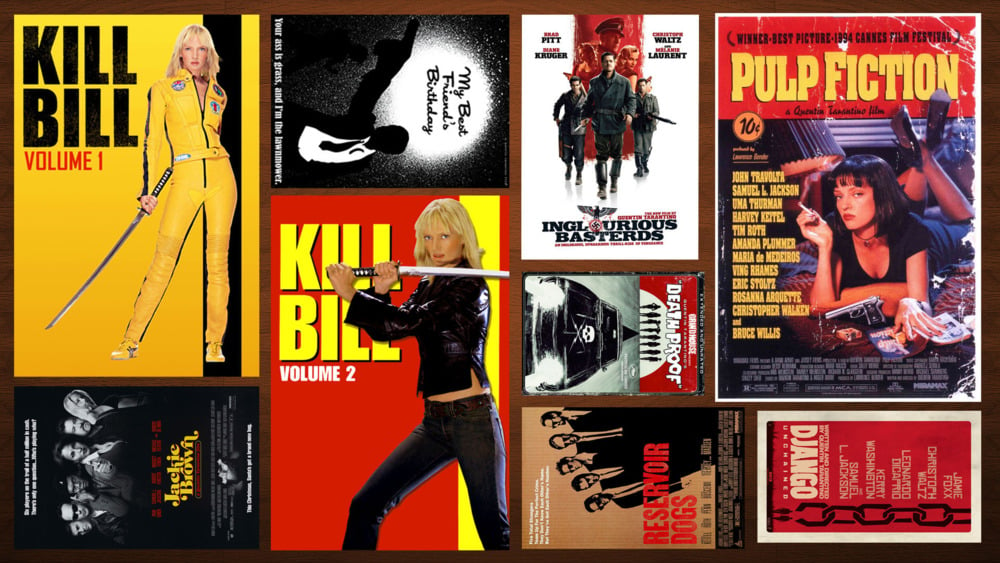The Venom franchise has carved a unique niche within the expansive Marvel universe, diverging from the conventional superhero narrative and focusing on a more complex, anti-heroic character. This series offers a fresh perspective by spotlighting Eddie Brock, a journalist who becomes host to an alien symbiote called Venom. The intriguing dynamic between Eddie and Venom is central to the storyline, providing a compelling blend of action, conflict, and unconventional heroism.
Unlike the traditional superheroes that often embody virtuous ideals, Venom explores the gray areas of morality. Eddie Brock, portrayed by Tom Hardy, is not your typical hero; he grapples with personal and professional failures that make him a more relatable and flawed character. His encounter with the symbiote adds layers of complexity, as the alien organism brings both tremendous power and considerable ethical dilemmas.
The symbiote itself, Venom, is an extraterrestrial entity that requires a host to survive, merging both physically and mentally with Eddie. This union creates a dual persona with a shared consciousness, leading to a continuous internal struggle for control. Venom’s powers include superhuman strength, agility, and an ability to shape-shift, among others. However, these abilities come at a cost, as the symbiote has its own violent and chaotic tendencies that often conflict with Eddie’s more human sensibilities.
Released in 2018 and 2021 respectively, “Venom” and its sequel, “Venom: Let There Be Carnage,” have not only expanded the Marvel cinematic landscape but also introduced audiences to a new kind of protagonist. The films deftly combine elements of horror, science fiction, and dark comedy, setting them apart from other entries in the Marvel series. This innovative approach has resonated with audiences, making Venom a significant and intriguing addition to the Marvel pantheon.
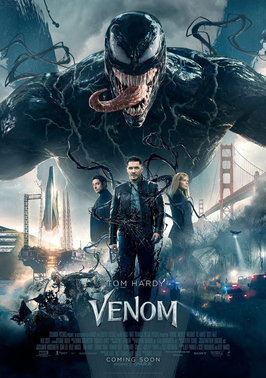
Venom 1
Released in 2018 and directed by Ruben Fleischer, “Venom” introduces audiences to the origin story of Eddie Brock, portrayed by Tom Hardy. Eddie is an investigative journalist who becomes entangled in a series of life-altering events that lead to his transformation into Venom, one of Marvel’s most enigmatic anti-heroes. The film begins with Eddie’s fall from grace after he attempts to expose the unethical practices of the Life Foundation, a bioengineering corporation headed by the ruthless Carlton Drake, played by Riz Ahmed.
Drake’s obsession with symbiotes—extraterrestrial organisms capable of bonding with human hosts—sets the stage for a dramatic confrontation. Eddie’s life takes a drastic turn when he inadvertently merges with one of these symbiotes known as Venom. This fusion grants Eddie superhuman abilities but also introduces a duality, as he must navigate the conflicting desires of his own conscience and Venom’s more primal instincts.
The central conflict revolves around Eddie’s struggle to control Venom’s chaotic impulses while simultaneously addressing the larger threat posed by Drake and the Life Foundation’s experiments. As Eddie and Venom come to a mutual understanding, they work together to thwart Drake’s plans to bring more symbiotes to Earth, which could spell disaster for humanity. The narrative weaves together elements of personal redemption, ethical dilemmas, and high-octane action, culminating in a climactic showdown between Venom and Drake’s own symbiote-enhanced alter ego, Riot.
Through its plot, “Venom” explores themes of identity, power, and morality, positioning Eddie Brock’s journey as a compelling tale of transformation and resilience. The film successfully sets the stage for future developments in the Marvel universe, establishing Venom as a pivotal character with a complex, multi-dimensional allure.

Venom: Let There Be Carnage
“Venom: Let There Be Carnage,” directed by Andy Serkis, serves as a thrilling continuation of the narrative established in the first “Venom” film. The movie picks up with Eddie Brock (Tom Hardy) struggling to coexist with the symbiotic entity, Venom. The film’s primary antagonist, Cletus Kasady (Woody Harrelson), is introduced initially as a deranged serial killer awaiting execution.
The storyline takes a dramatic turn when Kasady, through a series of events involving Eddie, becomes the host for another symbiote, Carnage. This transformation grants him extraordinary powers, setting the stage for significant conflict. The contrast between Eddie/Venom and Cletus/Carnage is a focal point of the movie, highlighting the duality of their relationships. Where Eddie and Venom maneuver through their turbulent yet symbiotic relationship with a degree of begrudging cooperation, Cletus and Carnage exhibit a far more destructive partnership, driven by chaos and violence.
The film delves into the complexities of these relationships, exploring themes of control, identity, and coexistence. The narrative progresses through intense confrontations, both physical and psychological, between Eddie/Venom and Cletus/Carnage. The tension escalates to a climactic battle where the titular characters face off in a visually stunning and action-packed showdown. Serkis’s direction ensures that the tension remains palpable, making each confrontation feel critical to the unfolding drama.
In the end, the resolution sees Eddie and Venom overcoming Carnage through sheer tenacity and a better understanding of their partnership. This battle not only resolves the immediate threat posed by Carnage but also signifies a deeper acceptance between Eddie and Venom, setting up potential future developments in their symbiotic journey. “Venom: Let There Be Carnage” successfully builds on its predecessor, offering a blend of dark humor, intense action, and character development that keeps the audience engaged.
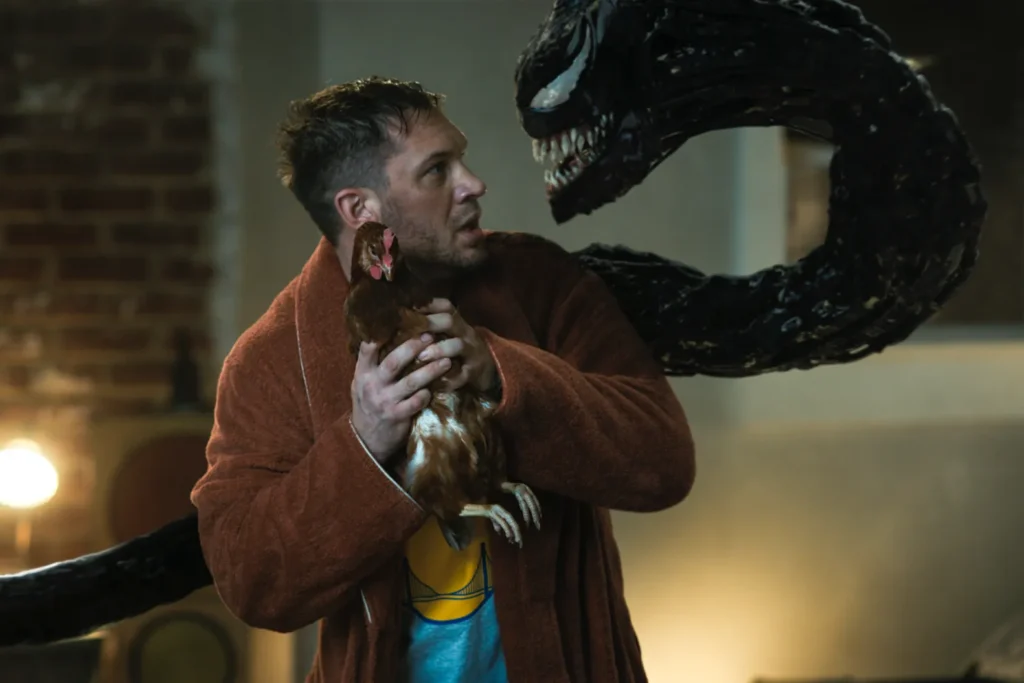

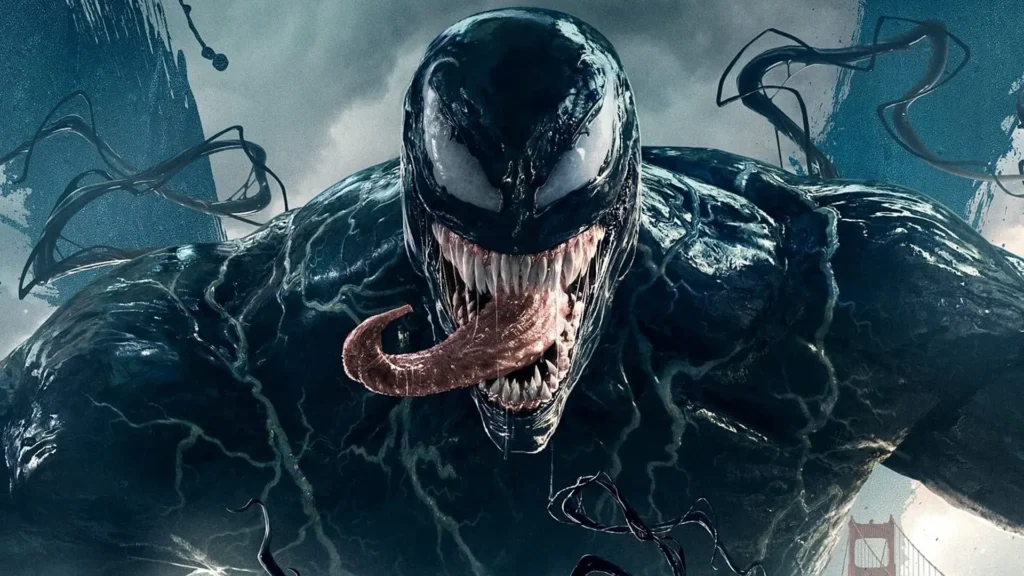
Character Development and Performances
The character development in “Venom” and “Venom: Let There Be Carnage” is pivotal to the narrative’s success and audience engagement. At the forefront is Eddie Brock, portrayed by Tom Hardy, who undergoes significant personal evolution across both films. Initially depicted as a struggling journalist whose career and personal life are in shambles, Eddie’s character is fundamentally transformed by his symbiotic relationship with Venom. This partnership, although tumultuous, allows Eddie to regain a sense of purpose and agency, propelling him into a role that spans vigilante heroism and reluctant anti-heroism.
Tom Hardy’s performance is integral to this transformation. His portrayal of Eddie Brock captures the complexity of a man grappling with his own morality while adapting to the alien presence within him. Hardy’s ability to convey vulnerability and strength simultaneously makes Eddie a relatable and compelling character. The dynamic between Eddie and Venom, marked by both conflict and camaraderie, showcases Hardy’s range and adds a layer of depth to the storyline.
Michelle Williams, as Anne Weying, provides a nuanced performance that complements Hardy’s. Anne, Eddie’s ex-fiancée, is portrayed with a balance of empathy and resilience. Her character, although secondary, plays a crucial role in grounding Eddie’s humanity and often serves as a moral compass. Williams’ portrayal ensures that Anne is more than just a love interest; she is a character with her own agency and significance within the narrative.
The antagonist, Cletus Kasady, brought to life by Woody Harrelson, offers a stark contrast to Eddie Brock. Harrelson’s portrayal of Kasady, who transforms into the menacing Carnage, is both chilling and charismatic. His performance adds a layer of unpredictability and intensity to the sequel, significantly raising the stakes for Eddie and Venom. Harrelson’s ability to embody Kasady’s psychopathic tendencies without descending into caricature ensures that Carnage is a formidable and memorable villain.
Overall, the character development and performances in both films are crucial in bringing the Marvel series to life. The actors’ ability to convey complex emotions and relationships significantly enhances the narrative, making “Venom” and “Venom: Let There Be Carnage” compelling additions to the Marvel universe.

Visual Effects and Cinematography
The visual effects and cinematography in both Venom 1 and Venom 2 are nothing short of groundbreaking. The films employ state-of-the-art CGI to bring the symbiotic characters of Venom and Carnage to life, with a level of detail that enhances the storytelling and immerses the audience in the Marvel universe. The work of the visual effects teams stands out as a milestone in the genre, pushing the boundaries of what can be achieved on screen.
In Venom 1, the visual effects team meticulously crafted the titular character, bringing his complex, liquid-like physiology to vivid life. The transformation sequences, where Eddie Brock merges with Venom, are particularly noteworthy for their seamless blend of live-action and CGI. These moments are crucial in establishing the symbiotic relationship between the characters, making the visuals an integral part of the narrative.
Venom 2, subtitled Let There Be Carnage, takes the visual spectacle to another level. The character of Carnage, with his chaotic and more aggressive design, is a true highlight. The visual effects team employed advanced techniques to animate Carnage’s tendrils and movements, making him a visually striking antagonist. The climactic battles between Venom and Carnage are a feast for the eyes, with the CGI work enhancing the intensity and brutality of their confrontations.
Director Ruben Fleischer in Venom 1 and Andy Serkis in Venom 2 both made significant contributions to the films’ dark, gritty aesthetic. Fleischer’s directorial choices emphasized a moody, noir-like atmosphere, which complemented Venom’s anti-hero narrative. Serkis, known for his expertise in motion capture and visual storytelling, brought a unique perspective to the sequel, further refining the visual tone and ensuring that the cinematography and effects worked harmoniously.
Overall, the visual effects and cinematography in Venom 1 and Venom 2 set new standards in the superhero genre. The successful integration of CGI with live-action elements and the bold directorial decisions created a visually compelling experience that significantly enhances the storytelling in both films.




Soundtrack and Score
The musical elements of the “Venom” movies play a critical role in shaping the audience’s experience, with the soundtracks complementing the tone and mood of the films. The first “Venom” movie features a score composed by Ludwig Göransson, renowned for his work on films like “Black Panther” and “Creed.” Göransson’s score for “Venom” is characterized by a dark, brooding quality that perfectly aligns with the film’s eerie and suspenseful atmosphere. His use of deep, resonant bass lines and dissonant strings amplifies the tension and drama of key scenes, making the presence of the symbiote feel both foreboding and thrilling.
In contrast, “Venom: Let There Be Carnage” entrusts its musical narrative to Marco Beltrami, another prolific composer known for his scores in “Logan” and “A Quiet Place.” Beltrami brings a distinctive approach that complements the film’s heightened sense of chaos and conflict. His score seamlessly transitions from moments of intense action to quieter, more introspective scenes, using a variety of instrumental textures and rhythmic patterns. This dynamic range not only supports the film’s dramatic arcs but also enhances the emotional depth of the characters, particularly during the climactic battles.
Both Göransson and Beltrami’s compositions are instrumental in crafting the auditory landscape of their respective films. Göransson’s score for “Venom” serves to establish a consistent, ominous tone that underscores Eddie Brock’s struggle with his parasitic alter ego. Meanwhile, Beltrami’s work in “Venom: Let There Be Carnage” injects a frenetic energy that mirrors the unpredictability and violence of Carnage, the film’s primary antagonist. The soundtracks, thus, are not mere background accompaniments but pivotal components that elevate the storytelling, immersing the audience deeper into the dark and complex world of Venom.
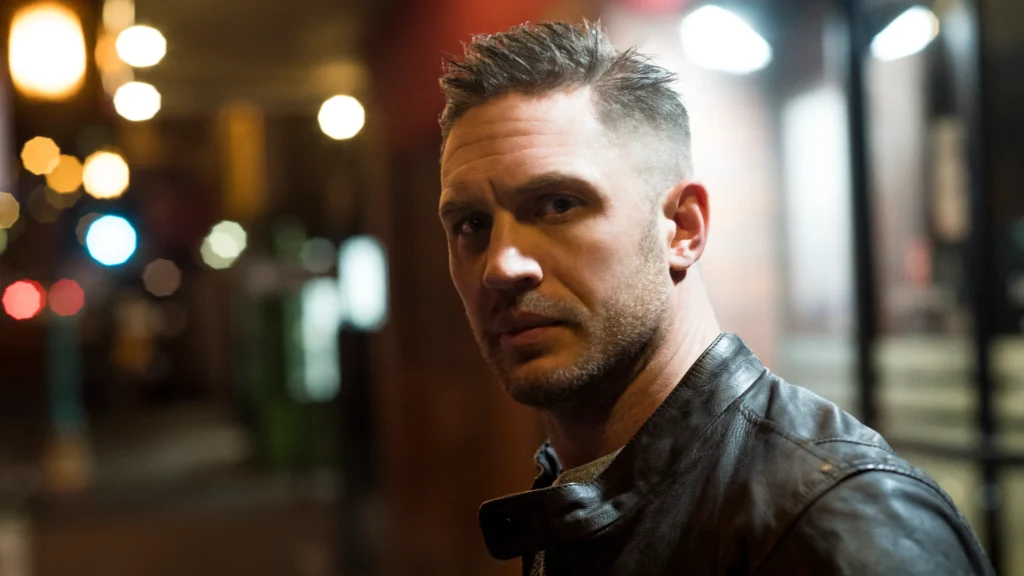
Critical Reception and Audience Response
The “Venom” movies, consisting of “Venom” (2018) and “Venom: Let There Be Carnage” (2021), have elicited a diverse range of reactions from critics and audiences alike. Critics have often pointed out that both films diverge from the traditional Marvel Cinematic Universe (MCU) formula, a departure that has been both criticized and praised.
Upon its release, “Venom” (2018) garnered mixed reviews from critics. Some praised Tom Hardy’s performance and the film’s unique comedic and dark tones, while others criticized its screenplay and perceived lack of coherence. Review aggregator Rotten Tomatoes reported mixed reviews with a critic score hovering around 30%, whereas Metacritic displayed a similar sentiment with a score in the mid-30s. Conversely, the audience reaction was notably more positive, with many viewers appreciating the film’s entertainment value and Hardy’s dynamic portrayal of Eddie Brock/Venom. Box office numbers reflected this overall enthusiasm, as the film grossed over $850 million worldwide, marking it as a commercial success.
“Venom: Let There Be Carnage” continued in the same vein, maintaining the franchise’s signature blend of humor and action. Critics’ responses were once again mixed, although slightly more favorable than the first film. The sequel’s Rotten Tomatoes critic score was around 59%, indicating a warmer reception, while Metacritic echoed this trend with a score in the mid-40s. Audiences, however, remained consistent in their support, with positive reactions highlighting the chemistry between Hardy and Woody Harrelson, who plays the antagonist, Carnage. The sequel also performed well at the box office, earning over $500 million globally, despite the challenges posed by the COVID-19 pandemic.
The “Venom” series’ commercial success and substantial audience approval have undeniably impacted the broader Marvel franchise. It has demonstrated that there is a viable market for Marvel films that stand apart from the conventional MCU offerings. The mixed critical reception juxtaposed with strong audience support underscores a dynamic where the franchise’s appeal transcends traditional critical metrics, suggesting that the “Venom” movies have carved out a distinctive niche within the Marvel universe.


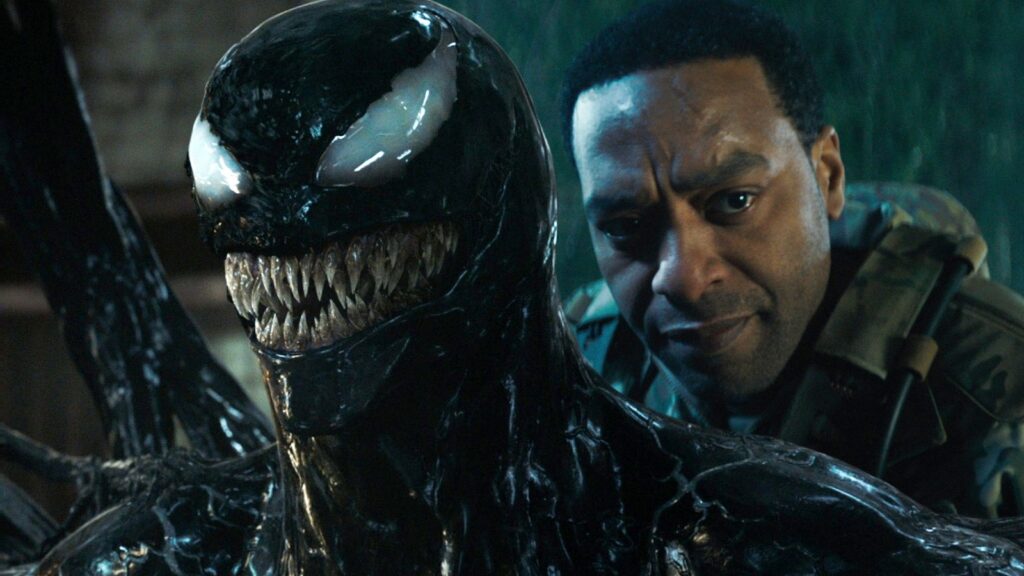
Venom’s Legacy and Future in the Marvel Universe
The legacy of the Venom movies within the Marvel Universe is both significant and transformative. Since its introduction, the character of Venom has evolved from a villain in the Spider-Man comics to a standalone anti-hero with a complex persona. The films “Venom” and “Venom: Let There Be Carnage,” featuring Tom Hardy’s portrayal of Eddie Brock, have further cemented Venom’s status as a pivotal character in the Marvel Cinematic Universe (MCU).
These movies have been instrumental in shifting the narrative landscape of superhero cinema, leaning heavily into the anti-hero archetype. Venom’s darker, more ambiguous morality contrasts with traditional superhero characters, offering audiences a nuanced approach to heroism. This shift has influenced the genre, paving the way for other anti-hero stories to gain mainstream acceptance and commercial success.
Looking ahead, the future of Venom within the MCU seems promising. The post-credit scenes in “Venom: Let There Be Carnage” have teased potential crossovers with other Marvel characters, particularly hinting at intersections with the Spider-Man universe. Given the intricate web of the multiverse explored in recent MCU films, a narrative where Venom interacts with characters like Spider-Man, Doctor Strange, or even the Avengers seems plausible. Such crossovers could provide rich storytelling opportunities, blending Venom’s gritty tone with the broader, interconnected Marvel Universe.
The potential for sequels is robust, with audiences and critics alike showing interest in further exploring Venom’s character arc. Future films could dive deeper into Eddie Brock’s relationship with the symbiote, introduce new villains, or expand on the lore of the symbiotes. Additionally, exploring the moral complexities and internal conflicts of Venom could offer unique narrative depth, distinguishing future installments from typical superhero fare.
Ultimately, the Venom movies have established themselves as milestones in the Marvel series. They have broadened the scope of superhero cinema, embracing darker themes and complex characters. As the MCU continues to evolve, Venom’s legacy will likely be a cornerstone, influencing the direction of future films and the portrayal of anti-heroes in the genre.

Venom: The Last Dance – A Symbiotic Finale Awaits
The anticipation for Venom: The Last Dance is palpable as fans eagerly await the third installment in the thrilling Venom series. Building on the chaotic energy and dynamic character development of its predecessors, this final chapter promises to deliver an electrifying conclusion to Eddie Brock and his symbiotic partner’s journey. Directed by Andy Serkis, the film is set to push the boundaries of the anti-hero genre, blending horror, humor, and heart in a way that has become a hallmark of the series. Tom Hardy reprises his role as the troubled journalist turned lethal protector, with rumors hinting at an epic showdown that could redefine his character’s legacy. The inclusion of new antagonists and allies alike, alongside stunning visual effects and a gripping storyline, ensures that The Last Dance will be a cinematic spectacle. As the title suggests, this film is poised to be a grand finale, encapsulating the essence of Venom’s chaotic yet endearing nature. The synergy between Brock and Venom will be tested like never before, promising a rollercoaster of emotions and edge-of-the-seat action. With its release, Venom: The Last Dance is expected to not only satisfy long-time fans but also captivate a new generation of viewers, cementing Venom’s place as a beloved figure in the superhero pantheon. As we brace for what could be Eddie Brock’s final adventure, one thing is certain: this is a dance you won’t want to miss.




